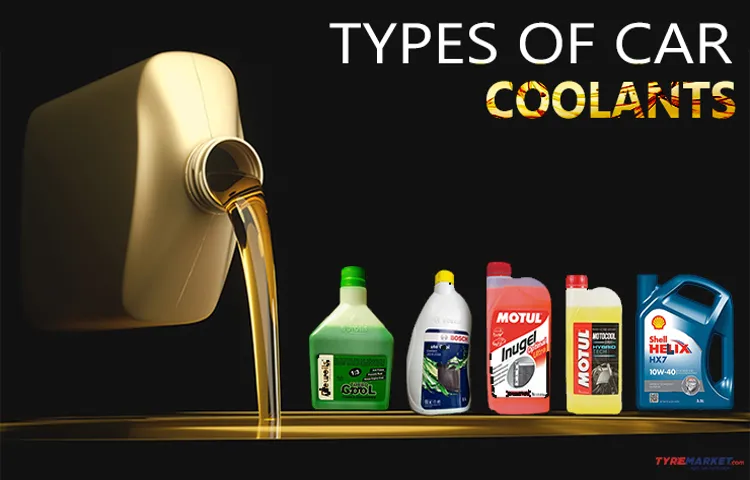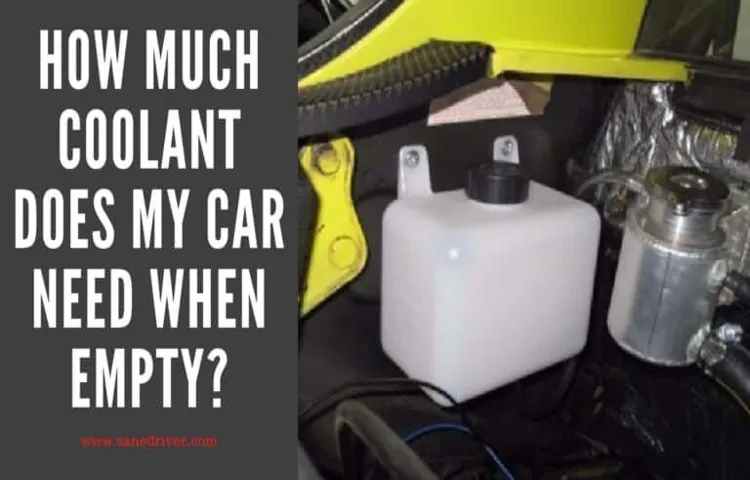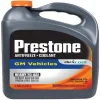Hey there! Have you ever wondered if your car needs coolant? Well, you’re in the right place! Your car’s coolant, also known as antifreeze, plays a crucial role in keeping your engine cool and preventing it from overheating. Think of it as the superhero that saves your engine from a fiery disaster! But how can you tell if your car is in need of some cooling action? There are a few telltale signs that can help you figure out if it’s time to top up your coolant levels. Just like your body needs water to function properly, your car needs coolant to keep its engine running smoothly.
One way to know if your car is in need of coolant is by keeping an eye on the temperature gauge on your dashboard. If it’s creeping up towards the red zone or your car is frequently overheating, it’s a clear sign that you need to check your coolant levels. Another sign to look out for is a sweet smell coming from the engine or coolant reservoir.
If you notice this scent, it could indicate a coolant leak. Coolant is usually green or pink in color, so if you spot any puddles under your car that match these hues, it’s time to investigate further. Additionally, if you’re experiencing a loss of engine power or your car is running rough, it could be a symptom of a coolant issue.
Overheating can cause damage to your engine’s internal components, leading to decreased performance. So, if you want to keep your car running smoothly on the road, it’s essential to pay attention to your coolant levels. Regularly checking and topping up your coolant can save you from costly repairs down the line and ensure a safe and efficient driving experience.
Stay tuned for our next blog post, where we’ll dive deeper into the steps you can take to check and add coolant to your car. Trust us, it’s easier than you might think! In the meantime, keep an eye out for those warning signs and always prioritize the health of your car’s engine. Happy driving!
Table of Contents
Introduction
Do you know how to tell if your car needs coolant? The coolant, also known as antifreeze, plays a vital role in keeping your car’s engine running at the right temperature. Without enough coolant, your engine can overheat and cause serious damage. One way to determine if your car needs coolant is by checking the coolant level in the overflow reservoir.
This can be done by locating the reservoir under the hood and checking the level against the “minimum” and “maximum” markings on the side. Additionally, you can visually inspect the coolant itself. If it appears dirty or has a brownish color, it may be time to flush and replace it.
Another sign of low coolant is if your car’s temperature gauge is consistently running hot. If you notice any of these signs, it’s important to add coolant to your car as soon as possible to prevent any further issues.
Importance of Coolant
coolant, importance of coolant

What Does Coolant Do?
coolant, cooling system, engine coolant, radiator, overheating
Why Checking Coolant is Important
coolant, importance of checking coolant, engine coolant, maintaining coolant levels
Signs That Your Car Needs Coolant
If you’ve ever blown a gasket or had your engine overheat, you know how important coolant is for your car’s performance. But how do you know when it’s time to top off your coolant levels? Well, there are a few signs that can indicate your car needs coolant. One indicator is if you notice steam or smoke coming from under the hood.
This could be a sign that your engine is overheating and in need of coolant. Another sign to look out for is if your temperature gauge is rising higher than normal. This can also be a signal that your coolant levels are running low.
Additionally, if you start to notice a sweet or fruity odor coming from your engine, it could be a sign of a coolant leak. By paying attention to these signs and regularly checking your coolant levels, you can ensure that your car’s engine stays cool and running smoothly.
Visible Leaks
coolant, car, leaks, signs
Overheating Engine
overheating engine, signs, car needs coolant Do you ever think about all the hard work your car’s engine does to keep you moving? It’s a real workhorse, but just like any hardworking machine, it needs some TLC every now and then. One of the most important things you can do to keep your engine running smoothly is making sure it has enough coolant. Coolant, also known as antifreeze, helps regulate the temperature of your engine and prevent it from overheating.
But how can you tell if your car needs coolant? Well, there are a few signs to look out for. One sign is a constantly rising temperature gauge. If you notice that your temperature gauge is creeping up into the red zone, it’s time to check your coolant levels.
Another sign is steam or smoke coming from under the hood. This could mean that your engine is overheating and the coolant is boiling. You might also notice a sweet smell coming from your engine, which is another indicator that your coolant is running low.
If you notice any of these signs, it’s important to take action right away. Driving with an overheating engine can cause serious damage to your car and leave you stranded on the side of the road. So do yourself a favor and keep an eye on your coolant levels.
Your engine will thank you!
Low Coolant Level
coolant, low coolant level, signs, car, needs coolant
Strange Smells or Smoke
coolant, car coolant, signs of low coolant, car overheating, coolant leak, strange smells, smoke from car
How to Check Coolant Levels
One important aspect of car maintenance is checking the coolant levels regularly. Coolant, also known as antifreeze, is a crucial component for regulating the engine’s temperature and preventing it from overheating. So, how can you tell if your car needs coolant? Well, one way is to simply open up the hood and locate the coolant reservoir.
This reservoir is usually a translucent plastic tank with “coolant” markings on it. By taking a peek inside, you can check the coolant levels. If the level is below the recommended mark, then it’s time to top it up.
Another way to check coolant levels is by examining the temperature gauge on your car’s dashboard. If the gauge is showing higher-than-normal readings, it could be a sign that the coolant levels are low. In such cases, it’s crucial to add coolant to prevent any potential damage to the engine.
Remember, keeping an eye on your car’s coolant levels is a simple yet essential task to ensure the longevity and smooth functioning of your vehicle.
Park Car on a Flat Surface
coolant levels
Locate the Coolant Reservoir
coolant reservoir. One crucial component of maintaining your vehicle’s performance is checking the coolant levels regularly. Coolant, also known as antifreeze, plays a vital role in keeping your engine cool and preventing it from overheating.
If the coolant level is too low, it can lead to engine issues and potentially costly repairs. So, how do you check the coolant levels? Well, the first step is to locate the coolant reservoir. The coolant reservoir is a small, plastic container usually found near the radiator.
It is transparent, allowing you to see the coolant levels easily. Some vehicles may have a coolant reservoir with a max and min level marked on it, making it even easier to determine if you need to top it up. To check the coolant levels, start by ensuring that the engine is cool.
Open the hood and locate the coolant reservoir. Remove the cap and check the level. If the coolant is below the minimum level, you will need to add more coolant.
However, if the coolant is dark or appears dirty, it might be a sign of contamination or an underlying issue that needs further investigation. In such cases, it’s recommended to have a professional look at your vehicle. Keeping an eye on your coolant levels is a simple yet essential maintenance task that can help keep your engine running smoothly and prevent any major issues down the road.
Check the Coolant Level
coolant levels, check coolant levels, coolant level check
Inspect the Coolant Color and Consistency
checking coolant levels, inspecting coolant color, coolant consistency. When it comes to maintaining your car’s engine, paying attention to the coolant levels is important. The coolant, also known as antifreeze, is what keeps your engine from overheating.
One way to check the coolant levels is by inspecting the coolant color and consistency. The coolant should be a vibrant color, usually green or orange, and it should be clear, without any debris or sediment floating in it. If the coolant color is dull or murky, it may be a sign of contamination or a coolant leak.
Similarly, if the consistency of the coolant is thicker or more watery than usual, it could indicate a problem with the coolant mixture. Regularly checking the coolant color and consistency can help you catch any potential coolant issues before they turn into bigger problems for your engine.
How to Add Coolant
Is your car running hot and you’re not sure why? One possible reason could be that your car is low on coolant. Coolant, also known as antifreeze, is a vital component of your car’s cooling system. Without it, your engine can overheat and cause serious damage.
So how do you know if your car needs coolant? One way to tell is by checking the coolant level in the overflow tank. This clear plastic reservoir is usually located near the radiator and has markings indicating the proper coolant level. If the level is below the minimum mark, then it’s time to add coolant.
Another way to determine if your car needs coolant is by checking the temperature gauge on your dashboard. If the gauge is in the red or showing an overheating symbol, then it’s a clear sign that your car needs coolant. In this case, it’s important not to drive your car until you can safely add coolant.
Adding coolant to your car is a relatively simple process. First, make sure your engine is cool before opening the hood. Locate the radiator cap and carefully remove it.
Then, pour the coolant into the radiator until it reaches the recommended level. Be sure to use a 50/50 mixture of coolant and water for optimal results. Finally, replace the radiator cap and check for any leaks.
If you’re unsure about how to add coolant or if your car continues to overheat after adding coolant, it’s best to consult a professional mechanic. They can diagnose any potential issues and ensure your car is running smoothly.
Prepare the Engine
Adding coolant to your car’s engine is an essential part of its maintenance. Coolant, also known as antifreeze, helps regulate the temperature of the engine, preventing it from overheating. So, how do you add coolant to your engine? Well, the first step is to make sure your car is parked on a level surface and the engine is cool.
You don’t want to deal with hot coolant spewing out and burning yourself. Once the engine is cool, locate the coolant reservoir under the hood. It’s usually a translucent plastic tank with min/max markings on the side.
Take off the cap and check the coolant level. If it’s low, slowly pour in the coolant until it reaches the maximum mark. Be careful not to overfill it, as this can cause other issues.
Once you’re done, securely close the cap and you’re good to go! Remember to check your coolant level regularly and top it up as needed to keep your engine running smoothly.
Open the Coolant Reservoir
coolant reservoir, adding coolant, engine temperature, overheating, coolant level, vehicle maintenance, car engine, coolant system. Having the right level of coolant in your car’s engine is crucial for its proper functioning and to prevent overheating. If you notice that your engine temperature is rising or that the coolant level is low, adding coolant to the coolant reservoir is a simple solution.
First, locate the coolant reservoir in your car’s engine bay. It is usually a translucent plastic tank with a cap labeled “coolant” or “engine coolant.” Once you have located it, check the coolant level by looking at the markings on the reservoir.
If the level is below the minimum mark, it’s time to add coolant. Open the cap of the coolant reservoir by twisting it counterclockwise. Be careful as the engine might still be hot, and hot coolant can burn your skin.
Once the cap is off, pour the coolant slowly into the reservoir until it reaches the maximum level marked on the reservoir. It’s important to use the correct type of coolant recommended by your car’s manufacturer. Adding coolant regularly is an essential part of vehicle maintenance, as it helps to regulate your car engine’s temperature and prevent overheating.
So make sure to keep an eye on your coolant levels and add coolant when necessary to keep your car running smoothly.
Add Coolant Slowly
coolant, add coolant, adding coolant, how to add coolant, coolant level
Close the Coolant Reservoir
coolant reservoir, add coolant, car engine, overheating, coolant level, radiator cap, coolant system, engine temperature When it comes to keeping your car engine running smoothly, maintaining the right coolant level is essential. The coolant reservoir is an integral part of the car’s cooling system, as it serves as a storage tank for coolant. If the coolant level is too low, it can lead to engine overheating and potential damage.
Adding coolant to the reservoir is a simple task that can be done by anyone. To start, make sure the engine is cool and the car is parked on a level surface. Locate the coolant reservoir, which is usually a translucent plastic container near the radiator.
Open the reservoir cap, being cautious not to burn yourself if the engine is still warm. Check the coolant level and add coolant as needed, making sure not to overfill. Finally, close the reservoir cap tightly to prevent any leaks.
Regularly checking and topping up the coolant level will help keep your engine running at the right temperature and avoid any overheating issues.
Conclusion
So, next time you’re feeling a bit hot-headed behind the wheel, take a moment to check if your car needs coolant. Just remember, if you see steam rising from the hood, or if your car starts hissing at you like an angry cat, it’s time to cool off and give it the love (and coolant) it needs. After all, you wouldn’t want your car to think you’re a hot mess, now would you?”
Regularly Check and Maintain Coolant Levels
“adding coolant” Regularly checking and maintaining coolant levels in your vehicle is crucial to ensuring its optimal performance and longevity. If your coolant levels are low, it can lead to overheating and potential damage to your engine. Adding coolant is a simple task that you can do yourself, saving you time and money.
To start, park your vehicle on a level surface and wait for the engine to cool down completely. Locate the coolant reservoir, which is typically a translucent plastic tank near the radiator. Check the coolant level by looking at the markings on the side of the reservoir.
If the coolant level is below the minimum mark, it’s time to add coolant. Before adding coolant, make sure to consult your vehicle’s manual to determine the correct type and mixture ratio. Once you have the appropriate coolant, carefully open the reservoir cap and pour the coolant into the tank until it reaches the maximum level.
Be cautious not to overfill it. After adding coolant, put the cap back on securely, wipe away any spills or drips, and start your engine to allow the coolant to circulate. It’s a good idea to visually inspect the coolant reservoir periodically to ensure that the level remains within the recommended range.
By regularly checking and adding coolant when necessary, you can keep your engine cool and running smoothly.
FAQs
How do I know if my car needs coolant?
There are a few signs that indicate your car needs coolant. Some common signs are low coolant levels, overheating engine, and coolant leaks.
What happens if my car runs out of coolant?
If your car runs out of coolant, it can lead to overheating, engine damage, and potentially a breakdown. It is important to regularly check your coolant levels and top up when necessary.
How often should I check my car’s coolant levels?
It is recommended to check your car’s coolant levels at least once a month to ensure they are at the proper level. Additionally, you should also check for any coolant leaks during these inspections.
How can I check if my car has a coolant leak?
To check for a coolant leak, you can visually inspect the ground underneath your car for any signs of coolant puddles. You can also check your coolant reservoir for any visible leaks or cracks.
Can I use water instead of coolant in my car’s cooling system?
While water can temporarily be used in an emergency situation, it is not recommended to use it as a long-term substitute for coolant. Coolant has additional benefits, such as providing corrosion protection and a higher boiling point.
What type of coolant should I use for my car?
The type of coolant you should use for your car depends on the manufacturer’s specifications. It is best to consult your car’s owner manual or a professional mechanic to determine the correct coolant type for your specific vehicle.
How can I prevent my car from overheating due to coolant issues?
Regular maintenance is key to preventing your car from overheating due to coolant issues. This includes checking coolant levels, inspecting for leaks, and flushing and replacing coolant at the recommended intervals.
What can cause coolant levels to drop in my car? A8. There are several reasons why coolant levels may drop in a car, including coolant leaks, a faulty radiator cap, a damaged radiator, or a malfunctioning water pump. It is important to identify and fix the underlying issue to ensure proper coolant levels.
Can I mix different coolant brands or types?
It is generally not recommended to mix different coolant brands or types, as they may have different chemical compositions that can lead to adverse reactions. It is best to use the same coolant brand and type as recommended by your car’s manufacturer.
Will using the wrong coolant damage my car?
Using the wrong coolant can potentially damage your car’s cooling system. It is important to use the coolant specified by your car’s manufacturer to ensure optimal performance and prevent any potential damage.
Can I change the coolant in my car myself?
While it is possible to change the coolant in your car yourself, it is recommended to have it done by a professional mechanic. They have the necessary tools and knowledge to properly flush and refill the coolant system.
How long does coolant last in a car?
The lifespan of coolant can vary depending on the type and brand. It is generally recommended to replace coolant every 2 to 5 years or as specified by your car’s manufacturer. Regular maintenance and inspections can help determine when coolant needs to be replaced.



